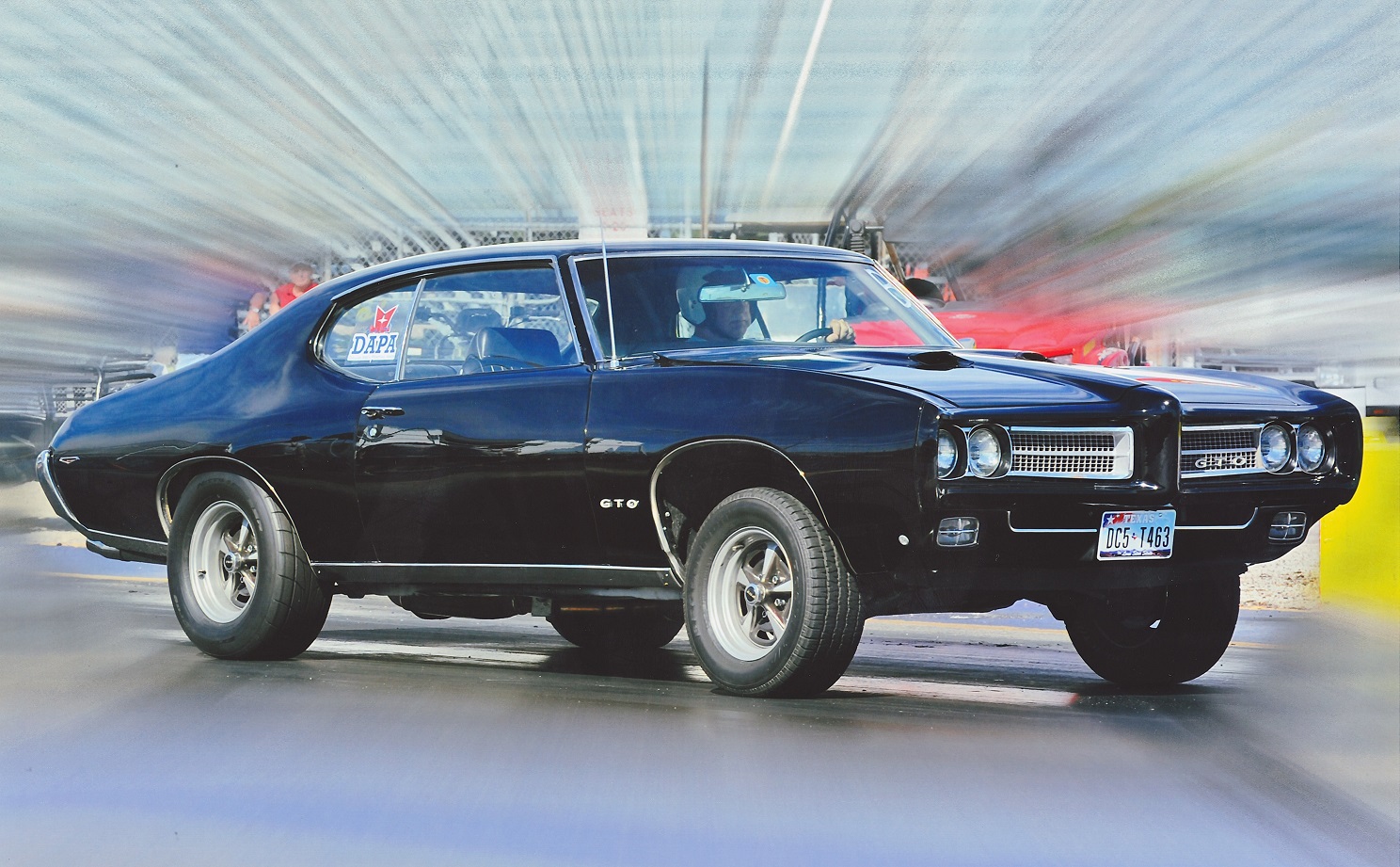Building a Strong Street Machine – Part 10: Harmonic Balancer
- March 16th, 2010
- Posted in Jim Hand: Building A Strong Street Machine . Technical Articles
- By D.A.P.A
- Write comment
The harmonic balancer is installed on the front of the crankshaft primarily to dampen the torsional vibrations of the crankshaft that is caused by the power pulses of each cylinder/rod. The secondary purposes of the balancer are to provide an ignition timing mark as well as a mounting point for the various drive pulleys.
The balancer is made in three basic parts; The inner metal section that fits on the crankshaft, the outer metal part that carries the timing mark, and a rubber donut-like section that is bonded to both metal pieces. The rubber absorbs the torsional shocks generated by the engine firing pulses transmitted through the rods. During normal operation, the rubber returns to its original configuration. However, after years of service or in a few cases of faulty assembly/material, the rubber may lose it’s bond to either of the metal parts. This allows the outer section to move from the original position which causes the ignition timing mark to be incorrect. It usually slips to the retard position which causes loss of power and engine heating problem.
What to do? Always check the balancer timing mark when an engine is disassembled. A dial indicator give the most accurate measurement but a bolt forced through an old spark plug can also be used a piston stop. In both cases, using #1 piston, turn the crank slightly past top dead center and take a dial indicator reading, ( or adjust the sparkplug/bolt to touch the piston top), and then temporarily mark the balancer at the zero point indicated by the front cover. Rotate the crank/piston an equal amount the other direction from top dead center and again mark the balancer. The halfway point between the two marks will be top dead center. If the balancer mark is relatively close, make a new permanent mark at the correct location and reuse the balancer. If the timing mark is off by more than 3 degrees, you should obtain a different unit. In either case, also place zero mark on the inner portion of the balancer and/or on the adjacent pulley so a correct reference is always available. New balancers may still be available through GM. Also, some of the specialized Pontiac suppliers may have them. There are various aftermarket versions available.
CAUTION: DISCONNECT THE BATTERY SO THERE IS NO POSSIBILITY OF THE STARTER ENGAGING WHILE THE PISTON STOP IS IN THE CYLINDER.
The Pontiac shop manuals specify to tighten the balancer to crankshaft bolt to 160#. DO IT. The crank has to be locked in place with a bolt or rod solidly in or through the ring gear, or the gear clamped using vise grips, to correctly set 160# of torque. You can’t do it with most air wrenches and you can’t do it with just engine compression against the wrench. What’s the price if you don’t get the balancer tight and it works loose? One or more of the following undesirable events will occur: The balancer will crack at the keyway, one or more main caps will crack, and/or the engine block will crack at the main bearing journals. Don’t take a chance on guessing the torque – adjust your 150# wrench to 150# and then pull 10# additional. The balancer assembly absorbs a tremendous amount of energy from the crank and it must be tight.
Is slippage of the balancer a problem? Absolutely. I assembled an engine in early spring (and zeroed the balancer) and almost immediately after installation started noticing a degradation in performance. Abnormal heating problems were also observed. Of course I checked and rechecked the timing, but as the balancer was moving gradually, I never paid any attention to the 1 degree or ½ degree variation of timing notes and simply reset the timing to the correct (?) point. When the faulty balancer was discovered, it had retarded 7 ½ degrees from the correct position in about five months of service. A new balancer (which checked correct within ½ degree) restored normal performance and alleviated the abnormal heating problems.

